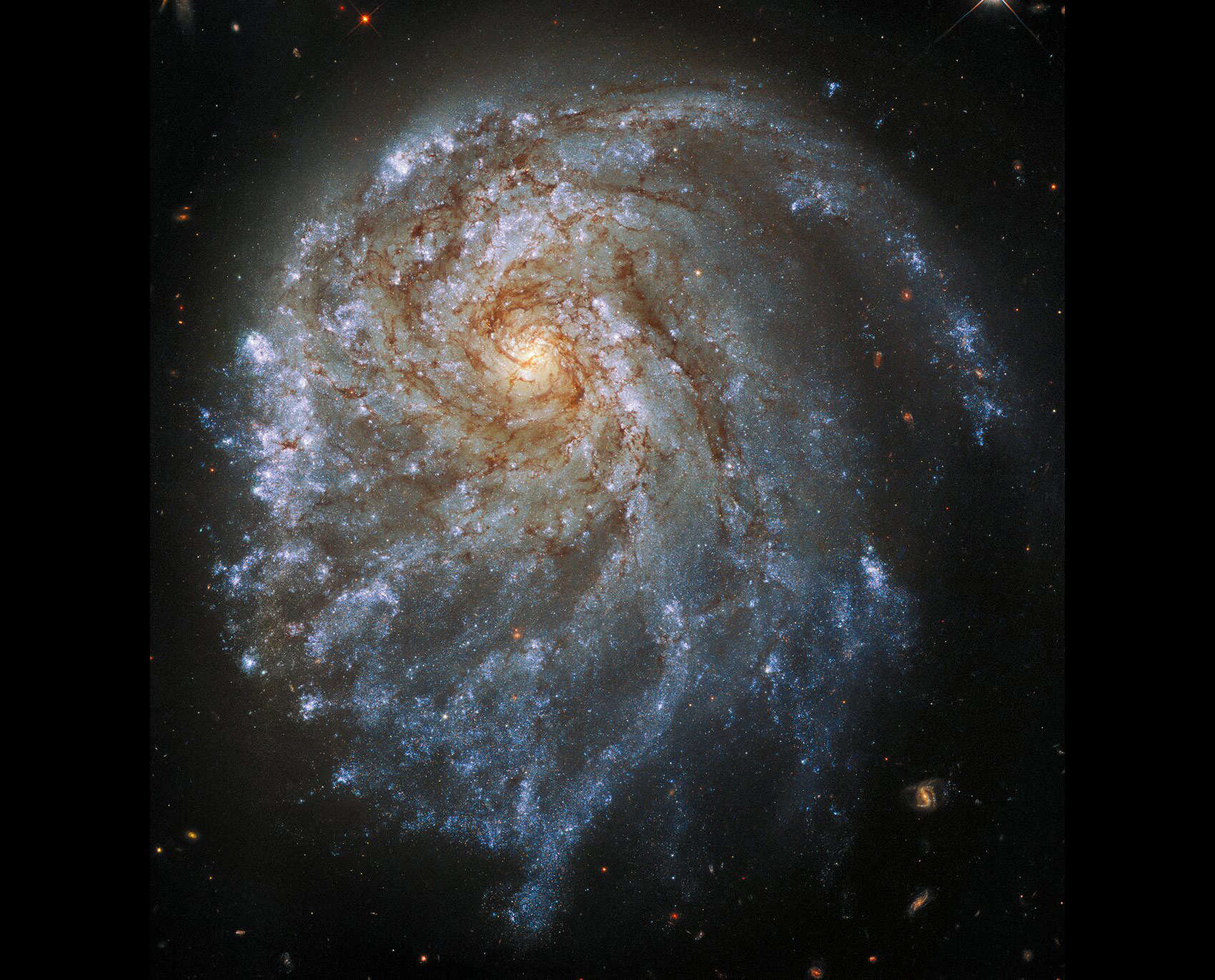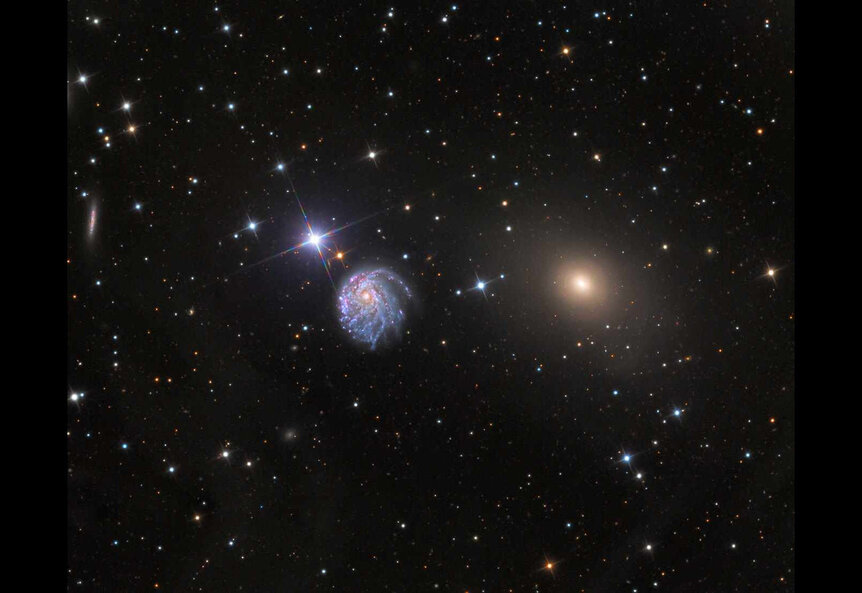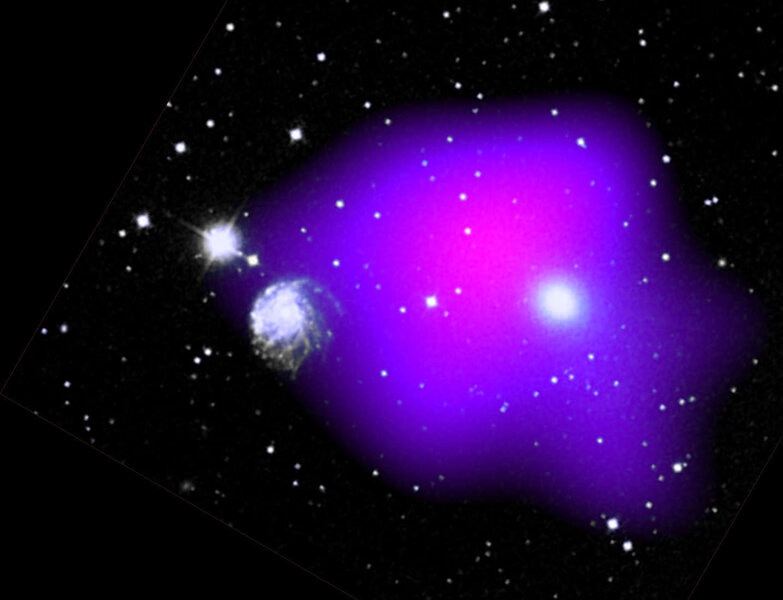Create a free profile to get unlimited access to exclusive videos, sweepstakes, and more!
This lopsided galaxy is a mess. But why?

In astronomy, like with most fields of science, there are mysteries we run across we can’t explain. In movies and TV show this usually means some extremely weird phenomenon that’s about to fall from the sky or break out of a beaker and wreak havoc, and the scientist in the story has no idea why.
In real life though the mystery is usually a little less life-threatening and more of a “Huh. I wonder what’s going on here?” kind of a thing. And the problem isn’t that we don’t have an explanation, it’s that we have too many and can’t be sure which is to blame.
For example, I present to you the jaw-droppingly gorgeous but somewhat mystifying galaxy NGC 2276, as seen by the Hubble Space Telescope:
Oooooo. So pretty. But also (cue creepy music) verrrryyyyy myseteeeeerious.
OK, cut the music. The mystery isn’t creepy, but it is a head scratcher. NGC 2276 is a spiral galaxy, but it’s distorted, lopsided. There’s an obvious central bulge to it, like most spirals have, but weirdly the bulge isn’t central. It’s way off to the side (to the west, in this case).
Clearly something big and powerful has exerted a strong force on this galaxy, changing its shape. But what?
As it happens, there’s a big galaxy not too far from NGC 2276, a puffy elliptical one called NGC 2300. Elliptical galaxies tend to be shaped like cotton balls and can be spherical or highly elongated, and can get very large, far larger than typical spiral.
So they have powerful gravity, and we know that when two galaxies get close to each other their gravity can distort the other, warping their shapes. You’ll notice that the distortion in the spiral is on the side closest to the elliptical, too, so that fits.
Also, X-ray and radio wave images of NGC 2276 also show what appears to be tails of hot and cold gas (what are called tidal tails) extending toward NGC 2300 as well.
So, case closed, right? <mimes wiping dust off hands>
Yeah, well, hang on a sec.
Take another look at that wide view of NGC 2276. Pinkish/red regions are gigantic gas clouds churning out stars. They seem to be clustered more around the upper left (east) side of the galaxy, on the side facing away from the elliptical. That’s odd; tides wouldn’t do that. It’s more like the gas on the left side of the galaxy is being compressed — when that happens the gas clouds collapse and form lots of stars. The stars then light up the gas, which is why that side appears brighter.
Not only that, but there have been an unusual number of supernovae, exploding stars, in NGC 2276 in the past few decades, and at least two of them were on the left side. Also, detailed X-ray images show lots of extremely bright sources of high-energy light for there, too. That may be from black holes gobbling down matter from a companion star, and those black holes would have formed from massive stars exploding as supernovae. Massive stars are rare (you get like one out of every few hundred or thousand stars made). Lots of massive stars indicates lots of star birth, again implying the left/east side of the galaxy is being compressed.
So how can that gas get compressed? The easiest and most common way is for a galaxy to be moving through gas outside of it; the pressure from that gas as the galaxy rams through it blows away the gas inside the galaxy (for a fun analogy involving cars and gassy dogs, try here).
That kind of intergalactic gas usually exists in big galaxy clusters, ones with hundreds or thousands of galaxies in them. NGC 2276 isn’t in a cluster like that.
… but it is in a group of galaxies, a small clutch of a few dozen galaxies, centered on NGC 2300, the elliptical! These are much smaller collections of galaxies, and it’s been thought that they don’t have enough gravity to hold on to very much gas. Our Milky Way is in a group (called the Local Group; don’t get me started on how astronomers name things), and there’s very little gas in it.
However, a deep X-ray image of the NGC 2300 Group taken by the ROSAT observatory does show that there’s hot gas in the group, and it is in fact enough to exert pressure on NGC 2276 as it plows through it.
A pair of studies (one in 2006 and another in 2015) looking at how effective this type of pressure is on NGC 2276 showed that not only is it possible that the ram pressure is what’s distorting the galaxy, it’s easily strong enough to do so without any tidal stretching by NGC 2300!
So it’s not so much that the bigger elliptical galaxy is pulling on NCG 2276 and stretching it out to the right, it’s more that NGC 2276 is moving rapidly enough that the gas between galaxies is compressing it on the left.
Mystery solved!
Well, maybe. It’s pretty rare in astronomy that any one cause is making all the effects seen. It’s still possible there’s some tidal distortion from the elliptical, and who knows what else might be going on. We can state with some confidence that gas compression is the major effect here, but maybe not everything. Also, it's likely that due to this pressure NGC 2276 will lose its remaining gas in the next two billion years or so.
So it’s nice to at least be able to know that much. And it does show that galaxy groups can retain decent amounts of gas, which is an important bit of knowledge. If we don’t see it in our own group, why not? Is the NGC 2300 group an exception or are we?
And that’s very typical for astronomy: Answer one questions, get a bunch more. The Universe is a complicated place, which makes it that much more fun when you figure out a piece of it.

















